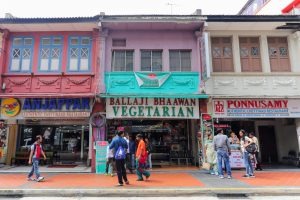Toddy, Race, and Urban Space in Colonial Singapore, 1900–59
December 8, 2022

On 8 December 2013, a riot broke out in Little India after a foreign worker was killed in a traffic accident. In the aftermath of the riot, the Singapore government restricted migrant workers’ access to alcohol in certain recreational spaces. Although the government agreed that alcohol was not a direct cause of the riot, they argued that it was a major contributing factor that led to it.
Alcohol provision has been shown to intersect with class distinctions, in the context of colonialism. In ‘Toddy, Race, and Urban Space in Colonial Singapore, 1900 – 59’ (Modern Asian Studies, 2019), Dr Darinee Alagirisamy (NUS South Asian Studies Programme) discusses different perspectives on the role of toddy in Singapore.
South Asian labourers have historically been associated with alcohol consumption and potentially dangerous behaviour. Toddy, traditionally seen as the Tamil’s choice of alcohol, led to demands to isolate toddy shops from ‘respectable’ urban spaces.
The centrality of toddy to Tamil social life was first established in the Madras Presidency, India. Though it was a type of alcohol, toddy was considered a less harmful alternative, prompting the colonial government to differentiate between ‘toddy and liquor’. Toddy was thus developed into a tool for the management of the Indian migrant labour force in Malaya.
In Singapore, the city toddy shop served as a prime meeting place for urban labourers to unwind and catch up. Though the patrons were largely South Indian, one could also find Punjabi, Chinese, and occasionally Malay men as well. Toddy shops were deliberately located in areas accessible to Tamil labourers, and often provided complementary goods like curry. While toddy was often seen to cause unruly and deviant behaviour, providing it to labourers was justified on the basis that a regulated amount was necessary to ensure productivity.
Toddy continues to be enjoyed in contemporary Malaysia. However, the industry was phased out in Singapore in the late 1970s due to colonial toddy policy in the country. While the opium trade was abolished in 1943 and other types of alcohol were distributed according to market demand, toddy was brought under government control, enabling the industry’s continuation. During the Japanese Occupation of Singapore, the toddy trade flourished due to the lack of other imported liquor alternatives. Toddy was also commonly used as medicine and as a source of nourishment, leading to a degree of social acceptance among Singaporeans. However, in the post-war period, toddy provision was brought under renewed British colonial control. By the mid-1950s, Indian and Chinese gangsters had acquired control of the toddy industry, and government toddy shops could no longer be policed effectively. Toddy shops faced intensified demands for reform and abolition due to concerns about their hygienic conditions, leading to the closure of Singapore’s toddy shops in the late 1970s.
Read the article here.
